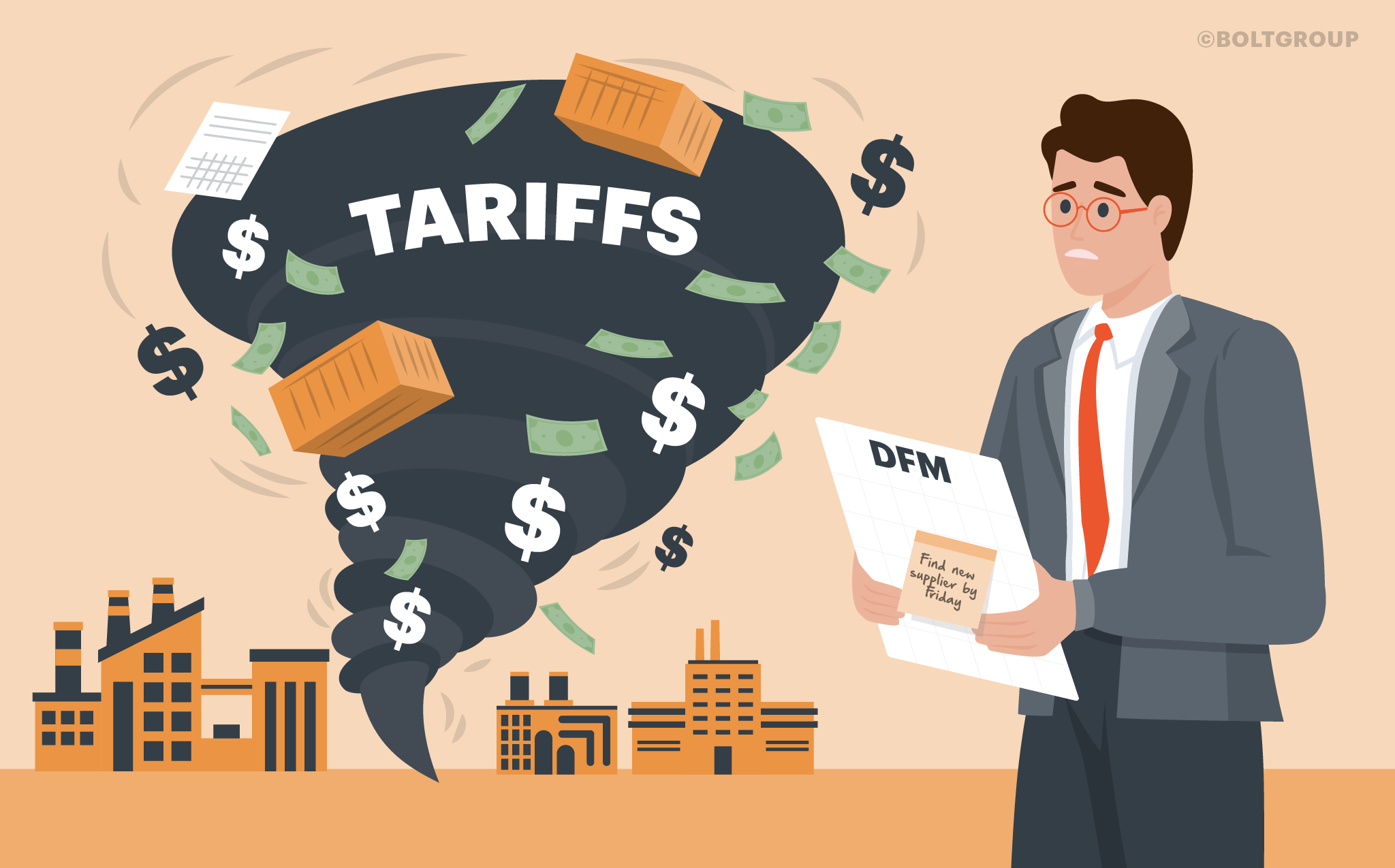For years, many U.S. manufacturers and consumer brands have leaned on global suppliers to provide cost-effective production of everything from raw materials to electronic components to finished goods. But with the recent wave of new tariffs, the landscape is shifting—fast. What was once a stable and affordable sourcing model is now under pressure, and companies are being forced to reevaluate not just where they make their products, but how they’re designed, engineered, and brought to market.
At BOLTGROUP, our clients are facing these exact challenges right now. Whether you’re sourcing all or part of your product line overseas, the implications of shifting sourcing are more than logistical—they go to the heart of how your products are conceived, built, and differentiated.
